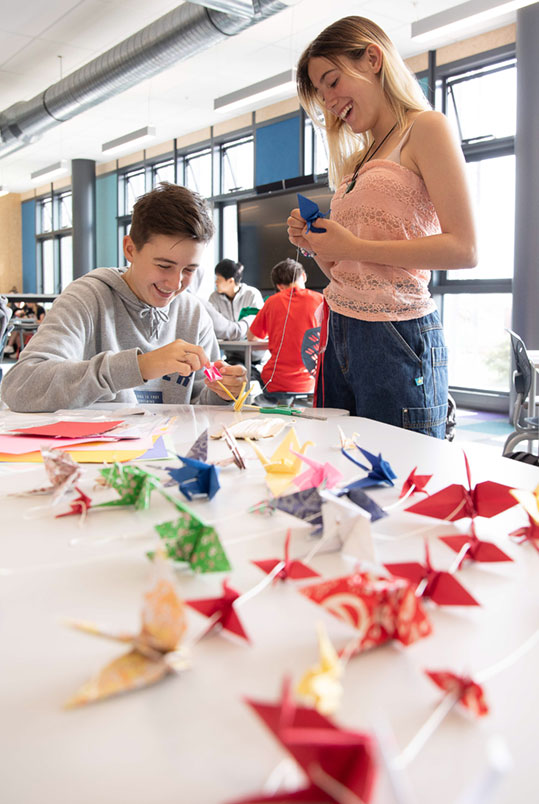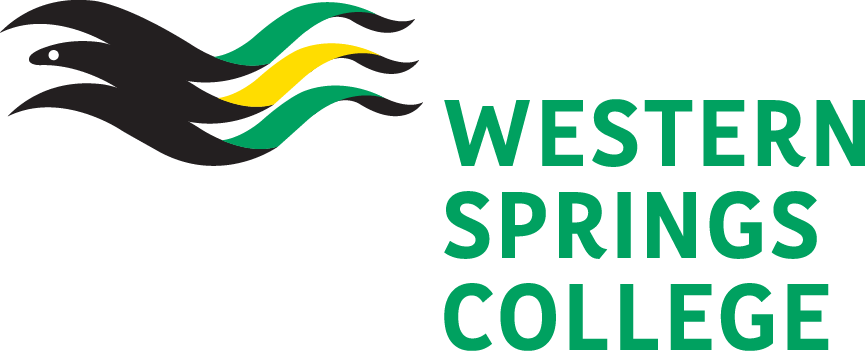Springs is an educational environment where students can discover and develop unique personal strengths that allow them to share in the building of a just and sustainable society.
Western Springs College, known to those who teach and learn here as ‘Springs’, occupies a special place in New Zealand’s educational landscape. We characterize ourselves as a ‘waka hourua’ – a double hulled canoe of English medium and Māori medium education.
The ‘Springs’ English medium school of 1450 students and the Māori medium rumaki immersion school, Ngā Puna o Waiōrea, of 300 students enables us to be doubly effective within the context of 21st century New Zealand Society.
If you had to choose one word to describe Springs, ‘real’ would be a good choice. We encourage academic achievement not as a prize fight, but because it opens doors that allow our students to follow any pathway they choose. We’re actively engaged with the communities we serve and the tertiary establishments that accept our graduates. And we attract teachers who are in the business of teaching, rather than enforcing rules for the sake of rules. Most of all, we understand that standing still is never an option. When proven educational innovations show us a better way, our students and teaching staff are keen pioneers.
Our school has completed the largest rebuild in the history of New Zealand secondary education. The result is a “school like no other”. A truly exceptional piece of architecture designed to change the way we think about pre-university learning environments. In fact, visitors tell us that Springs “looks like a University. “There is no way this is a school!” is their response as they experience this place for the first time.
A school within a school
Western Springs College and Ngā Puna O Waiōrea operate collaboratively from one location. Ivan Davis is principal of Western Springs College, a state co-educational secondary school; Chris Selwyn is principal of Ngā Puna O Waiōrea, a Te Reo Maori immersion kura. Students flow between the schools, according to their year level and course choices.
Our students
From the moment of enrolment, Springs’ students are encouraged to become self-managers. This helps them to hit the ground running when they move to university or a traineeship on their chosen career path. However self-management doesn’t come naturally to everyone, so we have support systems in place that encourage mentoring and vertical friendships across the ages. As well as providing new students with effective role models who can gently train them in the art of self-management, cross connections between ages and stages help to build a family atmosphere within the school.
We are committed to mixed-ability teaching at all levels because we believe it’s important to have high expectations for all students. Young people tend to learn in bursts and are intelligent in different ways, so we think it’s irresponsible to limit anyone with an ability label. Experience has taught us that some students peak early, while others are slow burners who’ll rise in the future.
Thanks to the diligence of our students, Western Springs College has been the top NZ Decile 8 state secondary school for seven consecutive years. We’ve also been the top (first or second rating) Auckland region state secondary school for seven consecutive years. Our Level 3 NCEA pass rate is 90%, compared to the national average of 82%.

Our teachers
The teachers who call Springs home are innovative, exciting and passionate. They’re resilient too, because our self-reviewing philosophy requires everyone to accept and work on negative feedback just as readily as they accept compliments.
You won’t find the practice of self-review in many New Zealand schools yet. It’s one of the educational innovations we’ve embraced, because we’re committed to continual improvement. Every two years we check the quality of our service delivery with questionnaires – one for teaching staff, one for students and another for parents. All respondents are encouraged to tell us, frankly, what’s working in the school and what’s not. We also participate in a survey run by the NZ Council for Educational Research which enables students and teachers to assess key drivers in the school, including hot topics like bullying.
Our parent community
The parents who support Springs are realists who want a relevant, contemporary education for their children. In other words, they want their children to succeed in a way that leaves more doors open for tertiary study, career opportunities and life fulfilment. At no point do they want the wool pulled over their eyes about what’s actually happening with their kids at school.
With this in mind, our open days aren’t approached as glamorous or special occasions. Instead we give parents and other caregivers the chance to observe typical teaching and learning days. Visitors get to see the students in action – interacting with teachers, collaborating with each other and turning out extraordinary everyday work. The insight, skills, consideration and respect they witness in our classrooms never fail to impress. Arrange a visit and a tour with our principal to experience it for yourself.
The future is now
Our buildings and facilities are quite different to those found in other recently-built New Zealand high schools. Instead of spreading out, the direction for our new-look school is up.
A three-storey teaching block, situated on the best geotechnical location within our site, has replaced most of our classrooms. There are 81 teaching spaces, with 12 set aside for Ngā Puna o Waiōrea in their 2 storey teaching block. The migration to our new buildings has coincided with the end of single cell classroom teaching and a move to 90-minute teaching blocks. It is high school, but not as most of us know it. The Ministry of Education has a catchphrase for this new open-plan collaborative reality – innovative learning environments. Our students are able to go deeper and further into topic areas, because they have the time, space and multi-teacher support they need.
We’re poised on the brink of a secondary school revolution, and we embrace it.

